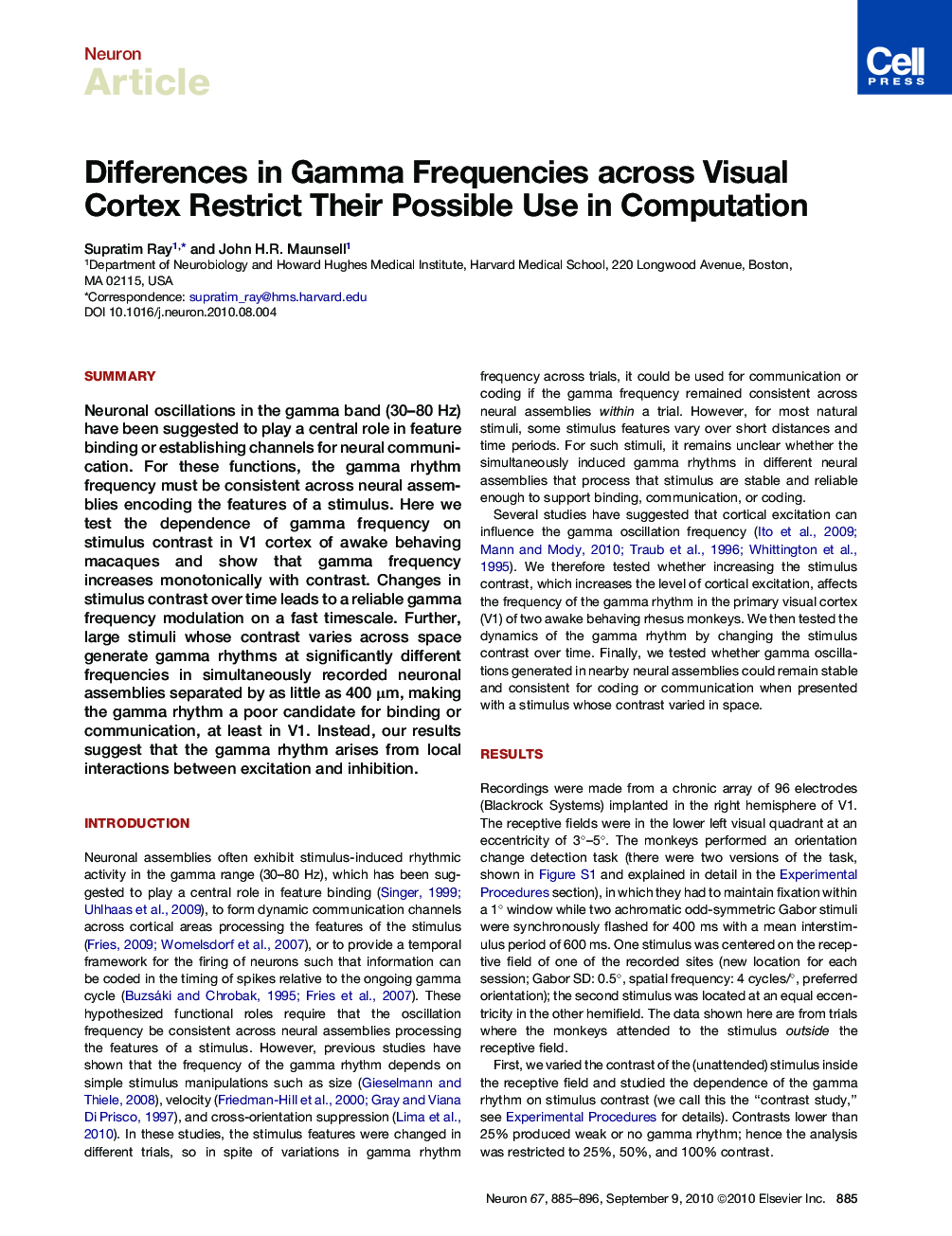| Article ID | Journal | Published Year | Pages | File Type |
|---|---|---|---|---|
| 4321926 | Neuron | 2010 | 12 Pages |
SummaryNeuronal oscillations in the gamma band (30–80 Hz) have been suggested to play a central role in feature binding or establishing channels for neural communication. For these functions, the gamma rhythm frequency must be consistent across neural assemblies encoding the features of a stimulus. Here we test the dependence of gamma frequency on stimulus contrast in V1 cortex of awake behaving macaques and show that gamma frequency increases monotonically with contrast. Changes in stimulus contrast over time leads to a reliable gamma frequency modulation on a fast timescale. Further, large stimuli whose contrast varies across space generate gamma rhythms at significantly different frequencies in simultaneously recorded neuronal assemblies separated by as little as 400 μm, making the gamma rhythm a poor candidate for binding or communication, at least in V1. Instead, our results suggest that the gamma rhythm arises from local interactions between excitation and inhibition.
► Gamma oscillation frequency increases with increasing stimulus contrast ► Changing contrast over time causes fast gamma frequency modulation ► A Gabor stimulus generates neuronal assemblies oscillating at different frequencies ► Gamma rhythm may arise from local circuit interactions
